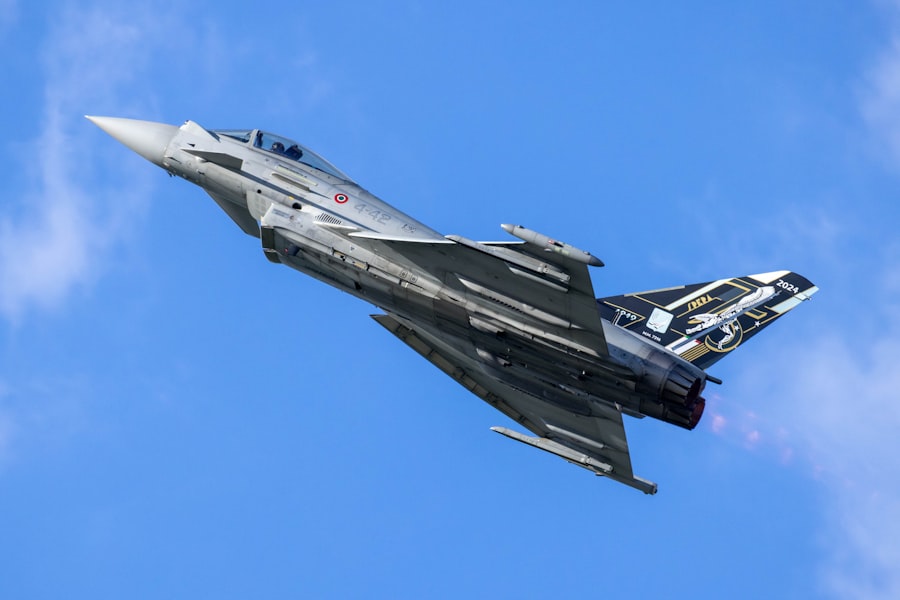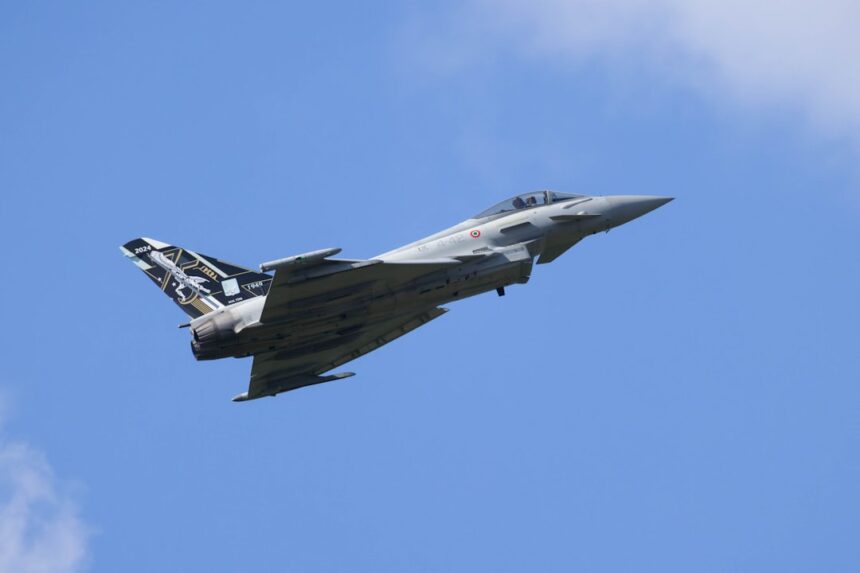In the realm of air defense, the ability to detect small targets has emerged as a critical component of national security. As aerial threats evolve, so too must the technologies and strategies employed to counter them. Small targets, which can include drones, missiles, and other low-flying objects, present unique challenges that require sophisticated detection systems.
The increasing prevalence of these threats has underscored the necessity for advanced detection capabilities that can operate effectively in diverse environments and against a backdrop of rapidly changing technological landscapes. The significance of small target detection extends beyond mere identification; it encompasses the entire spectrum of threat assessment and response. As military operations become more complex and multifaceted, the integration of small target detection into broader air defense strategies is paramount.
This article delves into the importance of small target detection, the technical challenges faced, and the innovative solutions being developed to enhance capabilities in this critical area.
Key Takeaways
- Small target detection is a critical aspect of air defense, as it involves identifying and tracking objects such as drones, missiles, and stealth aircraft.
- Technical challenges in small target detection include low signal-to-noise ratio, clutter, and the need for high resolution and sensitivity in radar and sensor technologies.
- Radar and sensor technologies such as AESA radar, LIDAR, and infrared sensors play a crucial role in small target detection by providing accurate and reliable data.
- Machine learning and artificial intelligence are increasingly being used to enhance small target detection capabilities by improving target recognition and reducing false alarms.
- Collaboration and integration of small target detection systems from different platforms and sensors are essential for maximizing detection capabilities and minimizing vulnerabilities in air defense.
The Importance of Small Target Detection in Air Defense
The importance of small target detection in air defense cannot be overstated. As adversaries increasingly employ unmanned aerial vehicles (UAVs) and other small-scale threats, the need for effective detection systems has become a priority for military organizations worldwide. These small targets can be used for reconnaissance, surveillance, or even direct attacks, making their timely identification essential for preemptive action and effective defense strategies.
The consequences of failing to detect such threats can be dire, potentially leading to significant damage or loss of life. Moreover, the proliferation of commercial drones has further complicated the air defense landscape. These devices are often inexpensive and widely available, making them accessible to a range of actors, including non-state entities.
As a result, air defense systems must be equipped not only to identify traditional military threats but also to discern between benign and potentially hostile small targets. This dual requirement adds layers of complexity to detection efforts, necessitating advanced technologies and methodologies that can adapt to an ever-changing threat environment.
The Technical Challenges of Small Target Detection

Detecting small targets presents a myriad of technical challenges that must be addressed to ensure effective air defense. One of the primary difficulties lies in the size and speed of these targets. Small aerial threats often have a reduced radar cross-section, making them difficult to detect against background clutter.
Traditional radar systems may struggle to differentiate between these small objects and other environmental noise, leading to false positives or missed detections. Additionally, the operational environment plays a significant role in the effectiveness of detection systems. Factors such as terrain, weather conditions, and electromagnetic interference can severely impact radar performance.
For instance, heavy rain or fog can obscure radar signals, while urban environments may introduce additional clutter that complicates target identification. These challenges necessitate the development of advanced algorithms and sensor technologies capable of filtering out noise and enhancing target visibility under various conditions.
Radar and Sensor Technologies for Small Target Detection
| Technology | Advantages | Challenges |
|---|---|---|
| Phased Array Radar | High resolution, fast scanning | Costly, complex maintenance |
| Lidar | Precise distance measurement | Weather interference |
| Infrared Sensors | Works in low light conditions | Limited range |
| Radar Cross Section (RCS) Reduction | Stealth capability | Complex design |
To address the challenges associated with small target detection, researchers and engineers have been exploring a range of radar and sensor technologies. Modern radar systems are increasingly incorporating advanced signal processing techniques that enhance their ability to detect small objects. For example, phased array radars allow for rapid scanning and tracking of multiple targets simultaneously, improving situational awareness in dynamic environments.
In addition to traditional radar systems, other sensor technologies are being integrated into air defense frameworks. Electro-optical and infrared sensors provide complementary capabilities by detecting heat signatures or visual cues associated with small targets. These sensors can be particularly effective in low-light conditions or when radar performance is compromised.
The fusion of data from multiple sensor types enhances overall detection accuracy and reliability, enabling air defense systems to respond more effectively to emerging threats.
The Role of Machine Learning and Artificial Intelligence in Small Target Detection
The advent of machine learning (ML) and artificial intelligence (AI) has revolutionized many fields, including air defense. These technologies offer powerful tools for improving small target detection capabilities by enabling systems to learn from vast amounts of data and adapt to new threats over time. Machine learning algorithms can analyze patterns in radar returns or sensor data, allowing for more accurate identification of small targets amidst clutter.
AI-driven systems can also enhance decision-making processes by providing real-time assessments of potential threats. By rapidly processing information from various sources, these systems can prioritize responses based on threat level and context. This capability is particularly valuable in scenarios where time is of the essence, as it allows operators to focus on the most pressing threats while minimizing the risk of human error.
Strategies for Improving Small Target Detection Capabilities

To enhance small target detection capabilities, military organizations are adopting a multifaceted approach that encompasses technology development, training, and operational strategies. One key strategy involves investing in research and development to create next-generation radar and sensor systems that are specifically designed to detect small targets more effectively. This includes exploring new materials and designs that improve radar performance while reducing size and weight.
Training personnel to operate these advanced systems is equally important. Operators must be well-versed in interpreting data from multiple sensors and understanding the nuances of small target behavior. Regular exercises that simulate real-world scenarios can help ensure that air defense teams are prepared to respond effectively when faced with actual threats.
Additionally, fostering collaboration between military branches and industry partners can facilitate knowledge sharing and accelerate the development of innovative solutions.
Case Studies of Successful Small Target Detection in Air Defense
Examining case studies of successful small target detection can provide valuable insights into effective strategies and technologies. One notable example is the use of advanced radar systems during recent military operations where UAVs were employed by adversaries. In these instances, air defense units successfully integrated multiple sensor types, including radar and electro-optical systems, to create a comprehensive detection network that significantly improved their ability to identify and neutralize small aerial threats.
Another case study highlights the implementation of machine learning algorithms in air defense systems during joint exercises between allied nations. By leveraging AI-driven analytics, these systems were able to distinguish between friendly and hostile UAVs with remarkable accuracy, demonstrating the potential for enhanced situational awareness in complex operational environments. Such examples underscore the importance of continuous innovation and adaptation in the face of evolving threats.
The Impact of Weather and Environmental Conditions on Small Target Detection
Weather and environmental conditions play a crucial role in the effectiveness of small target detection systems. Adverse weather phenomena such as rain, snow, fog, or high winds can significantly degrade radar performance and sensor accuracy. For instance, heavy precipitation can scatter radar signals, leading to reduced detection ranges or increased false alarms.
Similarly, fog can obscure visual sensors, making it challenging to identify small targets based solely on optical data. To mitigate these impacts, air defense systems must be designed with resilience in mind.
Additionally, redundancy in sensor types can provide backup capabilities when one system is compromised by weather effects. By understanding and accounting for these environmental factors, military organizations can enhance their overall readiness and effectiveness in detecting small aerial threats.
Collaboration and Integration of Small Target Detection Systems
Collaboration among various stakeholders is essential for advancing small target detection capabilities in air defense. This includes partnerships between military branches, government agencies, academia, and private industry. By fostering an environment of collaboration, organizations can share knowledge, resources, and expertise that drive innovation in detection technologies.
Integration is another critical aspect of enhancing small target detection systems. Modern air defense frameworks must be capable of seamlessly integrating data from multiple sources—such as radar systems, sensors, and intelligence feeds—to create a unified operational picture. This holistic approach enables decision-makers to respond more effectively to emerging threats while ensuring that all available resources are utilized efficiently.
Future Developments and Innovations in Small Target Detection
Looking ahead, several promising developments are on the horizon for small target detection in air defense. Advances in quantum radar technology hold potential for significantly improving detection capabilities by utilizing quantum properties to enhance sensitivity and resolution.
Additionally, ongoing research into autonomous systems may lead to the development of unmanned platforms capable of conducting surveillance missions specifically focused on identifying small aerial threats. These platforms could operate independently or in conjunction with manned systems, providing enhanced situational awareness while reducing risks to personnel.
Overcoming the Challenges of Small Target Detection in Air Defense
In conclusion, the challenges associated with small target detection in air defense are significant but not insurmountable. Through continued investment in technology development, training, collaboration, and innovative strategies, military organizations can enhance their capabilities to detect and respond to emerging aerial threats effectively. As adversaries continue to evolve their tactics and technologies, it is imperative that air defense systems remain agile and adaptive.
The integration of advanced radar technologies, machine learning algorithms, and collaborative frameworks will play a pivotal role in shaping the future landscape of air defense. By overcoming existing challenges and embracing new innovations, nations can bolster their security posture against an increasingly complex array of aerial threats—ensuring that they remain prepared for whatever challenges lie ahead.
In the realm of modern warfare, the challenge of intercepting small, agile targets has become increasingly significant. Air defense systems, traditionally designed to counter larger threats, often struggle with the detection and interception of smaller, more elusive objects. This issue is explored in depth in the article “Why Air Defense Misses Small Targets,” which delves into the technological and strategic hurdles faced by defense systems. For a broader understanding of the complexities involved in modern air defense, you might find the related article on In The War Room insightful, as it provides additional context and analysis on the evolving nature of aerial threats and defense strategies.
FAQs
What are small targets in air defense?
Small targets in air defense refer to objects such as drones, missiles, and other small aircraft that are difficult to detect and intercept using traditional air defense systems.
Why do air defense systems struggle to hit small targets?
Air defense systems struggle to hit small targets due to their size, speed, and maneuverability. Small targets are often designed to evade radar detection and can change direction quickly, making them difficult to track and intercept.
What are the limitations of current air defense technology in targeting small objects?
Current air defense technology often relies on radar systems that are optimized for detecting larger, slower-moving aircraft. This makes it challenging to accurately track and target small, fast-moving objects such as drones and missiles.
What advancements are being made to improve air defense against small targets?
Advancements in air defense technology include the development of more sophisticated radar systems, improved missile guidance systems, and the integration of advanced sensors and artificial intelligence to better detect and track small targets.
What are some potential solutions to improve air defense against small targets?
Potential solutions to improve air defense against small targets include the use of directed energy weapons, such as lasers, to quickly and accurately target and destroy small objects. Additionally, the integration of multiple defense systems and the use of networked sensors can improve the overall effectiveness of air defense against small targets.




